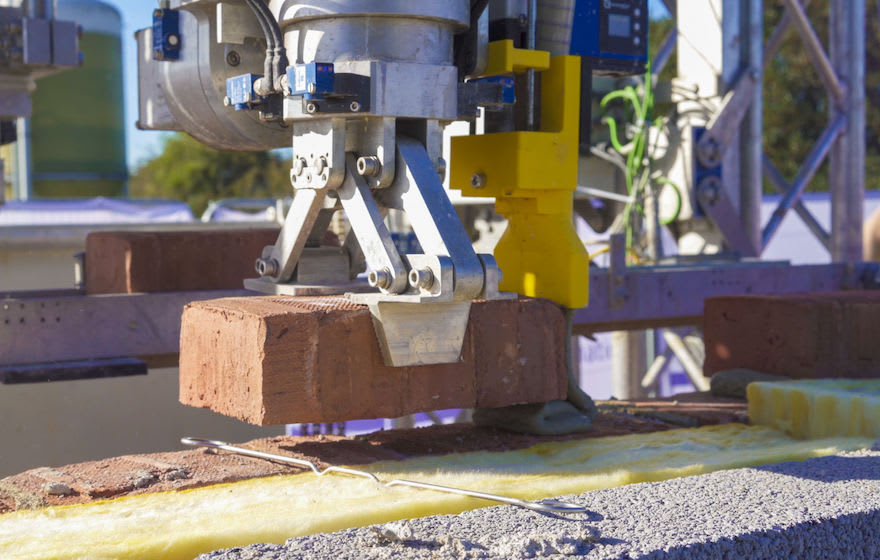Construction of the UK’s first robot-built house is underway in Everingham, in the East Riding of Yorkshire.
The three-bedroom house is being built from bricks by Construction Automation’s automatic brick laying robot (ABLR), which has taken four years to develop. The ABLR lays bricks, blocks, and mortar. Construction Automation claims it is the first robot of its kind that can build around corners.
Construction Automation co-founder David Longbottom said: “The house will contain around 10,000 bricks and will take the ABLR about two weeks to build.
“The ABLR comprises of the robot and a sophisticated software control system that reads digitised versions of architect’s plans. This instructs the robot exactly where to lay the blocks, bricks and mortar.
“It is controlled from a tablet and all the data about a specific build can be accessed remotely, making it very easy to assess progress on site at any time.”
Only two people are required to work on the house – a labourer to load bricks and mortar into the robot and a skilled operative to install tie bars, damp courses, and lintels, and to do the pointing.
The control system sends out alerts when these important jobs need doing, and then takes a photograph of the completed task to form a complete digital record of the key quality criteria.

Sensors measure each brick and line it up centrally on the wall
Construction Automation co-founder Stuart Parkes said the advantages of the ABLR include increased productivity, better quality houses, and improved health and safety on site.
“Although bricks are meant to be a standard size there is quite a lot of variation in them,” he added. “So, we use sensors to measure each individual brick and then to line it up, so it is precisely central on the wall. The sensors also align the edge of each brick to produce a perfect finish. That way, the ABLR builds quickly and to a consistently high standard.”
The ABLR sits on a nine-metre high vertical lift frame, removing the need for scaffolding and for people to work at height.
“The robot is mounted on a track that is placed around the footprint of the house,” he said. “With the in-built vertical lift, the machine can build easily to the height of a standard two-storey house, so it is much safer than building in the traditional way.”
Construction Automation has already secured patent in the USA on the technology, and a European and UK patent is expected to follow shortly.
David added that once the ABLR had completed this house and a number of other test properties, the company will be ready to go into full production.
“Our goal is to automate housebuilding as far as we can,” he said. “By doing this, we can increase productivity for the industry, improve health and safety, and guarantee quality.”
Comments
Comments are closed.












I have worked in attendance to bricklayers in all sorts of ‘hard to access’ places about a site/location.
The featured ‘gadget’ is wonderful in ideal applications…………notwithstanding these are rare as hens teeth.
I note the human interactions/attendance to enable this robot machine to ‘function’.
So how does one point the face brickwork when the need for a working scaffold deck is negated/absent?
Just wondering if it requires a CSCS card to enter site too????
Hand built and hand crafted , no-one will buy a robotic built house .
Can they program it to go down the pub and not come back